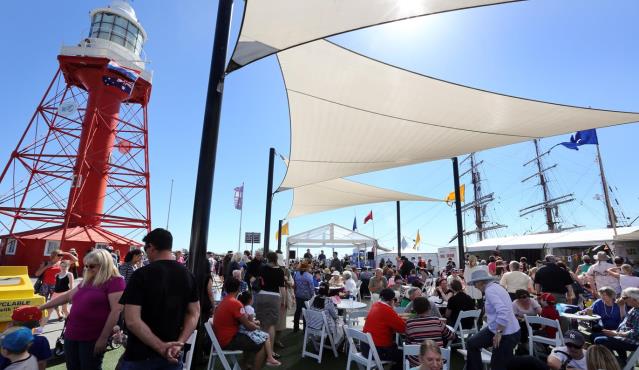
Fertiliser plant Incitec Pivot will move its operations out of Port Adelaide to a new South Australian facility, under a state government policy aimed at reviving Port Adelaide with more people, new homes and more jobs in the area.
From next year, calcium ammonium nitrate will no longer be stored at the Port Adelaide site, which along the with the agreement to move, will remove a substantial barrier to development in and around the harbour.
Premier Jay Weatherill today released the state government’s Our Port policy – the latest in its series of Building a Stronger South Australia policies.
“We have a vision for the Port that celebrates its maritime past and future, its attractiveness as a tourism destination and its desirability as a place to live, not just visit,” Mr Weatherill said.
“One of the key initiatives is the move of Incitec Pivot so it can continue serving the South Australian market from a new South Australian facility.
“This move will send a strong positive message about the future renewal of Port Adelaide.”
A precinct plan is being finalised as the first step towards rezoning the Port through a Development Plan Amendment, which will allow for future development.
The plan will be released early in the New Year once it has been refined to take into account Incitec Pivot’s relocation.
A number of new projects will be added to the many activation projects already happening at the Port. Projects designed to help regenerate the waterfront, St Vincent Street and Commercial Road areas include:
- Streetscape improvements to parking, walkways and general amenity on key streets.
- Repair and refurbishment of the Flour Shed in the Hart’s Mill precinct.
- State government support for entrepreneurs and business people through the Adelaide Business Hub at the Port.
- Continuing to establish new events at the Port to create vibrancy, revitalise the local economy and encourage community participation.
The state government is in discussion with the Port Adelaide Enfield Council about collaboration on further activation projects at the Port and will contribute half of the cost of these projects. The council will be asked to match that contribution.
The state government also will make a berth available at Dock One for the City of Adelaide clipper ship to be moored after its expected arrival in Adelaide in mid-January.
The City of Adelaide, built in England and launched in 1864, transported passengers and goods between Britain and Australia and carried many families who migrated to South Australia.
Dock One will be a temporary home while the state government works with the City of Adelaide Preservation Trust to develop a joint business case for a more permanent location.
“Docking the ship in the inner harbour will allow the public to view the ship after it makes its journey to South Australia,” Mr Weatherill said.
Under the plans to bring more people to the Port, the state government is advancing plans to lease office accommodation for government employees.
“Hundreds of government employees will relocate to the Port which will make the Port centre more attractive,” Mr Weatherill said.
“This will increase local employment, increase spending in local shops, support establishment of new businesses and attract other employers to do the same.
“Employees from different government agencies will work together on Port Adelaide-specific issues such as marine, waste and environmental management.”
Soon after becoming Premier in 2011, Mr Weatherill unveiled the government’s vision for Port Adelaide’s revitalisation.
“Now we are unveiling a plan for its future,” he said.
“Under this plan, there will be new homes, more people, more jobs, greater public and private investment and new shops in once-empty buildings.
“In the longer-term, trams will provide efficient access to jobs and services along the route and deliver more tourists to the Port, stimulating further development opportunities.
“Our plan has been shaped by the people who live in and love the Port – a strong community that makes the Port so special.”
To find out more, download the Our Port policy document.